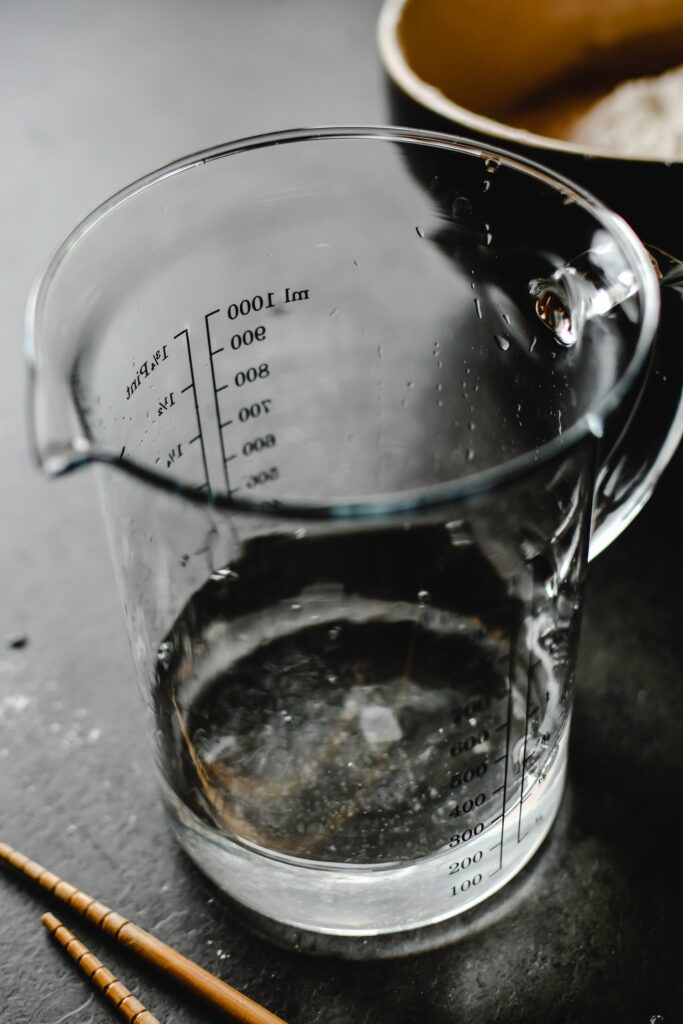The difference in the number of ounces in a gallon between the United States and the United Kingdom is due to the use of different gallon measurements:
- United States (US): In the United States, the gallon is defined as the U.S. customary gallon, which is equivalent to approximately 128 fluid ounces. This means that there are 128 fluid ounces in a U.S. gallon. The U.S. customary system is used for most everyday measurements in the United States.
2.United Kingdom (UK): In the United Kingdom, the gallon used is the Imperial gallon, which is larger than the U.S. customary gallon. An Imperial gallon is equivalent to approximately 160 fluid ounces. So, there are 160 fluid ounces in an Imperial gallon. The Imperial gallon is used in the UK for certain measurements, although the metric system is also widely used for many purposes.
Contents
- 1 Definition of an ounces
- 2 Definition of gallon
- 3 What is the connection between gallons and ounces?
- 4 how many ounces are in a gallon
- 5 how to convert between a gallon and ounces?
- 6 Here are the tips for converting a gallon to ounces exactly
- 7 FAQs: How Many Ounces Are in a Gallon?
- 7.1 How many ounces are in a U.S. gallon?
- 7.2 How many ounces are in an Imperial gallon (UK gallon)?
- 7.3 Can I use the same conversion factor for any type of gallon?
- 7.4 What are fluid ounces used for?
- 7.5 Are there different types of ounces?
- 7.6 How can I convert between gallons and fluid ounces?
- 7.7 Can I round the conversion result to the nearest whole number?
- 7.8 What are some common examples of gallon-to-ounce conversions?
- 7.9 Is there a difference between a dry ounce and a fluid ounce?
- 7.10 What measurement system is used in my country for gallons and fluid ounces?
Definition of an ounces
An ounce (abbreviated as “oz”) is a unit of mass or weight commonly used in the United States and some other countries. The term “ounce” can refer to both liquid ounces (fluid ounces) and avoirdupois ounces (used for dry weight).
- Fluid Ounce (fl oz): This is typically used to measure the volume of liquids. One fluid ounce is approximately equal to 1/128th of a U.S. gallon. It is commonly used for measuring beverages, cooking ingredients like water, milk, or juice, and in various culinary recipes and beverage recipes.
- Avoirdupois Ounce (oz): This is used to measure the weight of dry objects like food, packages, and other solid materials. In the avoirdupois system, there are 16 ounces in a pound, and one ounce is equal to approximately 28.35 grams. This is the ounce used for everyday weight measurements in the United States.
Definition of gallon
A gallon is a unit of volume commonly used for measuring liquid capacity. The exact volume of a gallon can vary depending on the specific measurement system being used, such as the U.S. customary system or the Imperial system. Here are the definitions of the two most commonly used gallons:
- U.S. Gallon (U.S. Customary Gallon): In the United States, a U.S. gallon is defined as 128 fluid ounces or approximately 3.785 liters. This is the gallon measurement used for most everyday purposes in the United States, such as measuring gasoline, milk, and other liquids.
- Imperial Gallon: In the United Kingdom and some other countries, the Imperial gallon is used. An Imperial gallon is larger than the U.S. gallon and is defined as 160 fluid ounces or approximately 4.546 liters. The Imperial gallon is primarily used in the UK for various measurements, including vehicle fuel consumption and some industrial applications.

What is the connection between gallons and ounces?
The connection between gallons and ounces lies in their relationship as units of measurement for volume and capacity:
- Gallons: Gallons are a larger unit of volume typically used for measuring liquids, especially in everyday contexts like filling up a car’s gas tank or buying milk at the grocery store. There are different types of gallons, such as the U.S. gallon and the Imperial gallon, which have slightly different volumes (128 fluid ounces in a U.S. gallon and 160 fluid ounces in an Imperial gallon).
- Ounces: Ounces are a smaller unit of volume, and they can be used for both liquid and dry measurements. In the context of liquid measurements (fluid ounces), they are often used for smaller quantities like in recipes for cooking or mixing drinks. There are also different types of ounces, such as fluid ounces (for liquids) and avoirdupois ounces (for dry weight), which have distinct conversion factors.
The relationship between gallons and ounces is based on these conversion factors:
- In a U.S. gallon, there are 128 fluid ounces.
- In an Imperial gallon, there are 160 fluid ounces.
So, if you know the type of gallon (U.S. or Imperial) and you want to convert it to fluid ounces or vice versa, you can use these conversion factors to make accurate measurements and calculations. Understanding this relationship is important when working with liquid volumes in different measurement systems, especially when following recipes or converting between U.S. and UK measurements.
how many ounces are in a gallon
There are 128 fluid ounces in a U.S. gallon. This is the most commonly used gallon measurement in the United States for measuring liquid volume. If you’re working with a different type of gallon, such as the Imperial gallon used in the United Kingdom, there are 160 fluid ounces in an Imperial gallon.
how to convert between a gallon and ounces?
To convert between gallons and fluid ounces, you can use the following conversion factors:
1 U.S. gallon (gal) = 128 fluid ounces (fl oz)
1 Imperial gallon (gal) = 160 fluid ounces (fl oz)
Here’s how to convert from gallons to fluid ounces and vice versa:
- From Gallons to Fluid Ounces:
- Multiply the number of gallons by the appropriate conversion factor.
- For U.S. gallons to fluid ounces:
- Number of fluid ounces = Number of gallons × 128
- For Imperial gallons to fluid ounces:
- Number of fluid ounces = Number of gallons × 160
- From Fluid Ounces to Gallons:
- Divide the number of fluid ounces by the appropriate conversion factor.
- For U.S. fluid ounces to U.S. gallons:
- Number of gallons = Number of fluid ounces ÷ 128
- For Imperial fluid ounces to Imperial gallons:
- Number of gallons = Number of fluid ounces ÷ 160

Here are a couple of examples:
Example 1: Convert 3 U.S. gallons to fluid ounces.
- Number of fluid ounces = 3 gallons × 128 = 384 fluid ounces
Example 2: Convert 480 fluid ounces to Imperial gallons.
- Number of gallons = 480 fluid ounces ÷ 160 = 3 Imperial gallons
Here are the tips for converting a gallon to ounces exactly
To convert a gallon to ounces exactly, you can follow these tips:
- Use the Correct Conversion Factor: Ensure that you are using the appropriate conversion factor based on whether you are dealing with a U.S. gallon or an Imperial gallon.
- For U.S. gallons to fluid ounces: 1 gallon = 128 fluid ounces.
- For Imperial gallons to fluid ounces: 1 gallon = 160 fluid ounces.
- Use the Conversion Factor in the Right Direction: Multiply the number of gallons by the conversion factor. If you are converting from gallons to ounces, multiply by the conversion factor. If you are converting from ounces to gallons, divide by the conversion factor.
- Be Careful with Unit Labels: Pay attention to unit labels to avoid mistakes. Make sure you have consistent units throughout your calculation.
- Check Your Math: Double-check your calculations to ensure accuracy, especially when dealing with larger numbers or when multiple conversions are involved.
- Use a Calculator: When dealing with larger quantities or when precision is crucial, using a calculator can help avoid mathematical errors.
- Round Appropriately: Depending on the context of your calculation, consider whether it’s necessary to round to a specific number of decimal places. In many cases, you may want to round to the nearest whole number.
- Understand the Type of Gallon: Be aware of whether you are working with a U.S. gallon or an Imperial gallon, as the conversion factors differ.
- Practice: Converting between gallons and ounces may become easier with practice. The more you work with these conversions, the more comfortable and accurate you’ll become.

FAQs: How Many Ounces Are in a Gallon?
How many ounces are in a U.S. gallon?
- There are 128 fluid ounces in a U.S. gallon. The U.S. gallon is commonly used for measuring liquid volume in the United States.
How many ounces are in an Imperial gallon (UK gallon)?
- There are 160 fluid ounces in an Imperial gallon (UK gallon). The Imperial gallon is used in the United Kingdom and some other countries.
Can I use the same conversion factor for any type of gallon?
- No, you should use the appropriate conversion factor based on whether you are dealing with a U.S. gallon or an Imperial gallon. Using the wrong conversion factor can lead to inaccurate results.
What are fluid ounces used for?
- Fluid ounces (fl oz) are typically used to measure the volume of liquids. They are commonly used in cooking, baking, beverage recipes, and for measuring the capacity of containers like bottles and cups.
Are there different types of ounces?
- Yes, there are different types of ounces. In the context of liquid measurements, you have fluid ounces (used for liquids), and in the context of dry weight, you have avoirdupois ounces (used for solid materials like food).
How can I convert between gallons and fluid ounces?
- To convert from gallons to fluid ounces, multiply the number of gallons by the appropriate conversion factor (128 for U.S. gallons, 160 for Imperial gallons). To convert from fluid ounces to gallons, divide the number of fluid ounces by the appropriate conversion factor.
Can I round the conversion result to the nearest whole number?
- Yes, in many cases, rounding to the nearest whole number is sufficient for practical purposes. However, consider the level of precision required for your specific application.
What are some common examples of gallon-to-ounce conversions?
- A common example is converting the capacity of a gas tank from gallons to fluid ounces for fuel efficiency calculations. Another example is converting a recipe that specifies gallons to fluid ounces for cooking or baking.
Is there a difference between a dry ounce and a fluid ounce?
- Yes, there is a difference. A fluid ounce is used for measuring volume, especially of liquids, while a dry ounce is used for measuring weight or mass, primarily for dry ingredients like flour or sugar.
What measurement system is used in my country for gallons and fluid ounces?
- The choice of measurement system (U.S. or Imperial) for gallons and fluid ounces depends on your country’s customary units. The U.S. uses the U.S. customary system, while the UK uses the Imperial system. Other countries may have their own systems.
